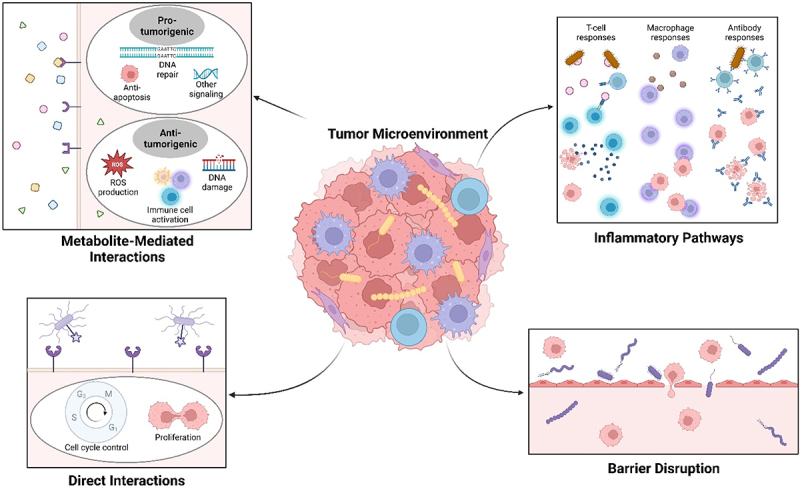Figure 2.

As microbes are present in local tissues, the tumor microenvironment (middle), and within tumor cells themselves, these tumor-associated microbes have been found to impact different cancer types through different methods, including metabolite-mediated interactions that can be pro-tumorigenic or anti-tumorigenic (top left); direct interactions with cancer cells to control the cell cycle and proliferation (bottom left); activation of inflammatory cells (glowing cells), such as T-cells (in blue), macrophages (in purple), and antibodies (in blue) (top right); and by disrupting vascular barriers to promote metastasis (bottom right).
